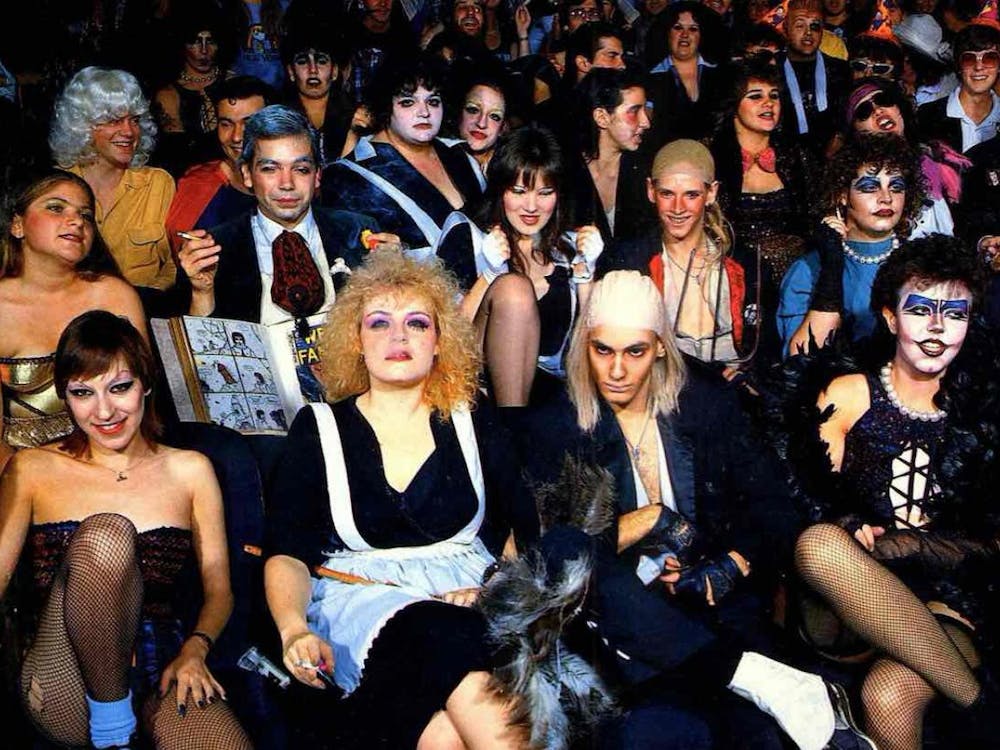Many have attempted to articulate the essence of what makes a cult film a cult film. According to the famously accurate and reliable Wikipedia, cult films are “known for their dedicated, passionate fanbase, an elaborate subculture that engage in repeated viewings, quoted dialogue and audience participation.” In a similar vein, perennial arbiter of all things culture Rolling Stone describes a cult film as having a “fiercely devoted audience that watches it over and over, preferably at midnight in a theater packed with other die-hards.” These two definitions are fairly adequate for almost 50 years of movie cult movie history. In this modern age of social media and streaming, however, such descriptions may no longer be accurate. The question then arises: Can cult films still exist today?
Some critics claim, rather pessimistically, that cult films are dead. It’s argued that films like “The Blues Brothers” have officially lost their cult status thanks to spikes in popularity on social media platforms and their ease of online access. Whether out of refusal to accept defeat or by some “mission from God,” I disagree. There is no question that the line between cult and mainstream has been virtually eradicated, in more ways than one. Nevertheless, cult films have persisted and remain their weird, wonderful and often community-inducing selves.
When DVDs hit the market back in 1997, cinephiles and cult film aficionados alike were adamant that midnight showings and gatherings of like-minded weirdos were an integral facet of cult films, and that the emergence of DVDs marked their demise. The advent of DVDs did expand the audiences of cult films; that much we can all agree upon. However, Mikel J. Koven, film studies professor at the University of Worcester, argues that smaller, at-home screenings of these films with family and friends serve the same purpose. They continue to forge communities founded on a shared admiration for a certain off-the-wall film. While these more intimate viewings normally don’t possess the same scale of enthusiasm and cult-like rituals throughout the film (aka throwing toast and “doing the time warp again” during “The Rocky Horror Picture Show”), they nevertheless encourage community and give these films the reverence and cult status they deserve.
I won’t go so far as to say that watching “Harold and Maude” on your living room couch is quite the same as attending a midnight showing. There is something undoubtedly special about seeing films on the big screen, immersed in the wonderful smell of stale popcorn and 20-year-old upholstery. Additionally, screenings of cult films often take place in historical movie theaters, like our very own Carolina Theatre. This atmosphere only contributes to the fun and funky experience of watching an equally fun and funky movie.
While social media and streaming services continue to dominate, well, the world, there is no need to fear for our beloved cult classics. Modern films like “Donnie Darko” and “Napoleon Dynamite” have each earned their place on Taste of Cinema’s list of “best cult movies of the 21st century,” along with “Shaun of the Dead” and “Scott Pilgrim vs. the World.” The simple existence of such a list stands as some kind of reassurance for the persistence of cult film culture. Old and new cult classics remain alive, well and as timeless as ever, only now reaching a broader audience.
Sometimes, a phenomenon exists without even a clear definition. When I asked my fellow Wannamaker residents to name their favorite cult movie, without defining what exactly a cult movie was, responses came streaming in. The ones mentioned in this article received some mentions along with a host of others, including “Mean Girls” (it looks like “fetch” actually happened), “The Breakfast Club” (who could forget John Bender’s iconic fist pump?) and “This is Spinal Tap” (don’t we all set our stereo volume “up to eleven”?). Nowadays, cult classics don’t necessitate midnight showings — they simply require an audience, preferably one prepared to quote the best lines, and some level of shared appreciation for the film’s significance. Everyone knows what a cult film is, and we all have our favorites.
I dressed up as Jake from “The Blues Brothers” in first grade, and my family and I have been making “Monty Python and the Holy Grail” ‘killer bunny rabbit’ jokes for as long as I can remember. Midnight cult film showings weren’t the most realistic family outing, even for my rather unconventional household, so I’m grateful to DVDs and streaming for providing the opportunity to experience these cherished cult classics at home with the people I love, and even more so for the memories they have been a part of. And now, years later, I can attend midnight screenings of “Rocky Horror” with friends and family, dialogue memorized and toast in hand because, after all, I have been watching it for years.
Get The Chronicle straight to your inbox
Signup for our weekly newsletter. Cancel at any time.

